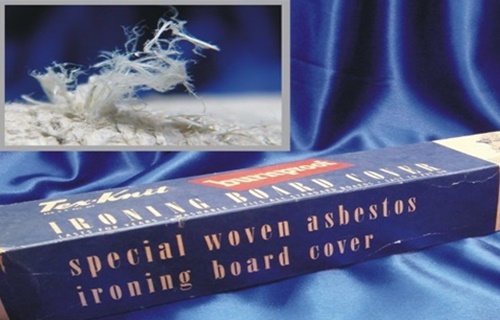How To Deal With Old Asbestos Products In Your House

Asbestos use peaked in the 1970s when the construction industry applied it in standard building products such as asbestos cement sheeting, corrugated roofing, asphalt, and insulation. The mineral became a popular building material for houses, but it can be found in many other products like gaskets, brake linings, electrical millboards, paints, and plastics.
The toxic mineral was used until the early 1800s due to its resistance to chemicals, heat, electricity, and corrosion. The material's versatility was also appealing to other industry branches, and asbestos-containing household products flooded the markets. Asbestos was a component in millions of consumer products, some of which can still be found in older homes or purchased on the vintage markets.
Items manufactured with this carcinogenic mineral were commercialized as durable and safe, but most household products of those times were anything but safe as they held the toxic fibers. Asbestos deteriorates over time, and with the wear and tear of the goods used daily, it becomes friable, releasing microscopic fibers into the air and posing a high health risk if people inhale or ingest them. This is why one should be careful around old products that used to contain asbestos:
- stoves
- ovens
- toasters
- slow cookers
- coffee pots
- bottle warmers
- popcorn poppers
- dishwashers
- washing machines
- dryers
- heaters
- ironing boards
- curling irons
- oven mitts
- dish towels
- potholders
- wicking for oil lamps
- placemats
- electric blankets
- ironing board covers
- fire blankets
It's important to note that asbestos poses a threat only when damaged and disturbed. When it comes to asbestos-containing products, it is regular use that could have deteriorated the toxic material. The best is to always look for signs of wear and tear and handle a broken product carefully. For instance, ironing boards from the last century would have a heat-protective mat to stand the iron on, made from insulation containing up to 40% asbestos. Regular use slowly deteriorated the ironing boards, which became chipped and cracked - the damage then facilitated an easy release of asbestos fibers into the air and, thus, the development of severe asbestos-related diseases decades later.
If you have vintage asbestos products in your home and they are not in good condition, it would be ideal to have these items removed by a professional, certified company specializing in asbestos removal or abatement, as randomly disposing of products containing asbestos is forbidden in most states. A team of professionals will know how to deal with old asbestos products through their knowledge, training, and resources. If you need to remove small asbestos products or just one piece of asbestos household item from your home, you can follow our DIY asbestos removal guide to dispose of the damaged items safely.
